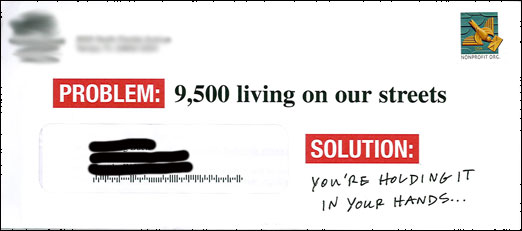This post is not fundraising advice.
What’s worse, it starts with a boring topic – our mission. Whee! So you’re 110% forgiven if you don’t keep reading.
But if you continue, you’ll see why we give away all of our fundraising knowledge. And you’ll get to celebrate a meaningful achievement with us.
Jim and I both come from “big nonprofit” backgrounds. And our mission when we started working together was to “radically increase the fundraising capacity of smaller nonprofits.”
That’s why our original name was “Better Fundraising For All.”
But small nonprofits have very small budgets… and we had mortgages to pay.
So we started serving organizations who had the budget to hire a coach or an agency. That led to Better Fundraising, an insightful team of 11, and we’re thrilled.
But!
There was a massive swath of smaller nonprofits that we weren’t helping.
So we started this blog in 2016. Here we can pass on – for free – all the knowledge we’ve been gifted and earned on our own. That led to thousands of subscribers, real-life breakthroughs (the stories are so fun!) and we’re honored to have you as a reader.
But!
Blogs are great… but they don’t “radically” help nonprofits raise more money.
Small nonprofits and new fundraisers still face the “blank page problem.” They can read all the most helpful blog posts, even take all of the standard fundraising training, and are still confronted with an implacable blank page and the difficulty of figuring out how to make it work for them.
Sometimes with real consequences – even lives – hanging the balance.
So what would cause radical improvement? “Radical increase” for a smaller nonprofit would happen if we could create a new form of training where Fundraisers were never faced with a blank page. And then I could walk them through every step to creating an effective appeal letter… or donor reporting letter… or year-end emails… or creating an annual plan… you get it.
Which brings us to Work Less Raise More and why launching it was such a dream come true for us. Work Less Raise More radically increases the capacity of smaller nonprofits to raise money.
First, it’s priced it so that any nonprofit can join long enough to get what they need.
It’s not $4,000 a month. It’s $40 a month.
You could join for just one month and easily produce this during the month:
- The rest of the appeals you need for this year
- All the email chasers
- All the e-stories and donor reporting letters
- Your entire year-end campaign
Your co-workers would be astonished. They wouldn’t believe it.
And doing it would be So. Much. Easier than what you’d normally go through.
Plus I could walk you through creating an annual plan (and give you a tool that estimates revenue and calculates production schedules for each project). And Jim could walk you through creating a major donor system that increases major donor giving & major donor retention AND makes knowing what to do next a snap.
And it’s working great for the hundreds of Fundraisers and organizations who are diving in. Chris Davenport – founder of the Nonprofit Storytelling Conference and our co-conspirator – says it’s the best training he’s ever seen. And that’s saying something.
So I hope can see why we’re so excited about Work LessRaise More. It’s the culmination of a dream. To use a spiritual term, it’s an “outward expression” of all the work to achieve our mission to “radically increase the fundraising capacity of smaller nonprofits.”
If you’re at a smaller nonprofit and could use a helping hand to get great fundraising out the door quickly, I hope you’ll check it out. And if you know a small shop or a Founder that’s just getting started, I hope you’ll pass it along.
Thanks for reading, thanks for being on this journey with us, and thanks most of all for being a Fundraiser. Like you, we believe that fundraising is about so much more than raising money!







